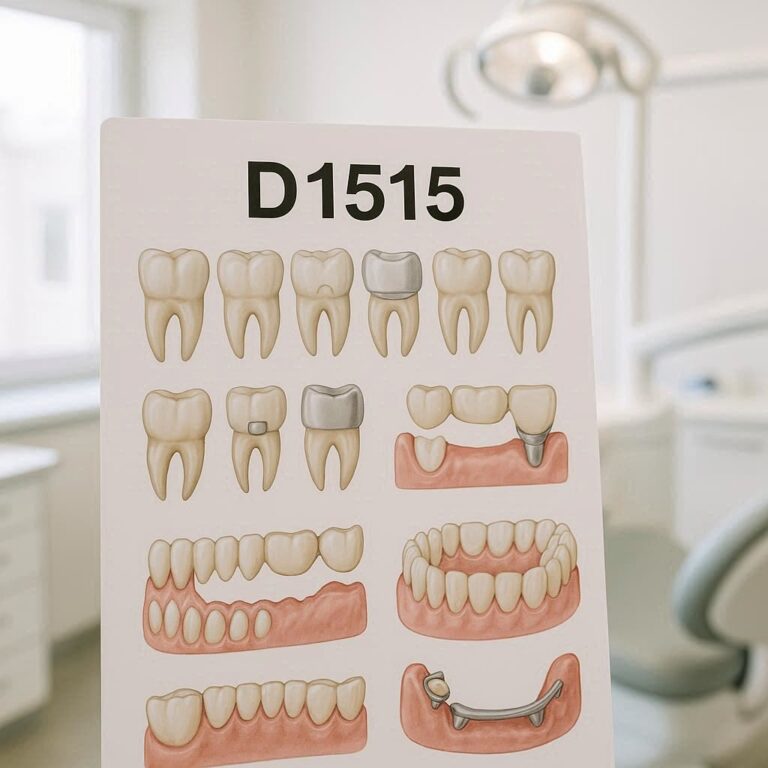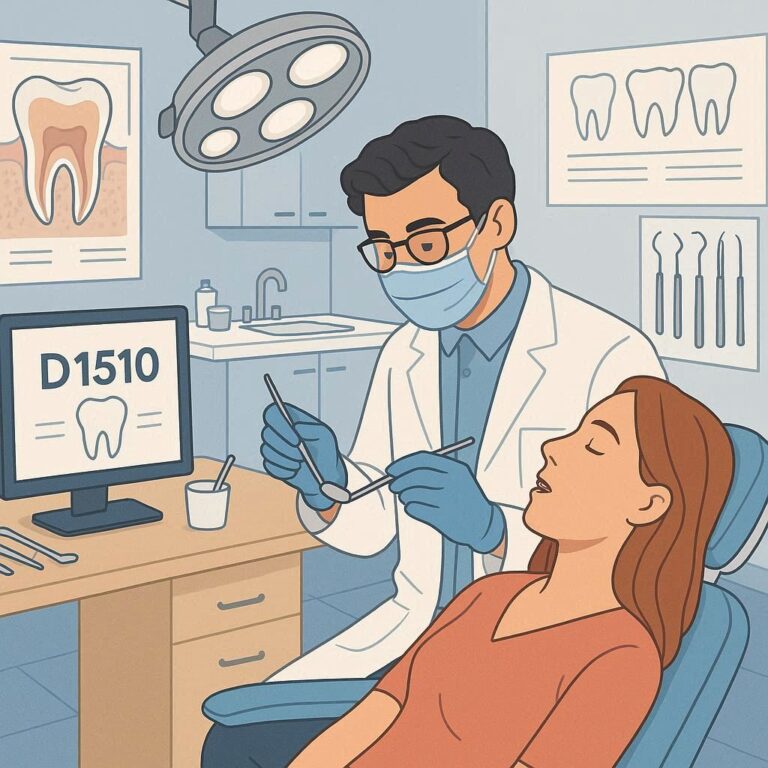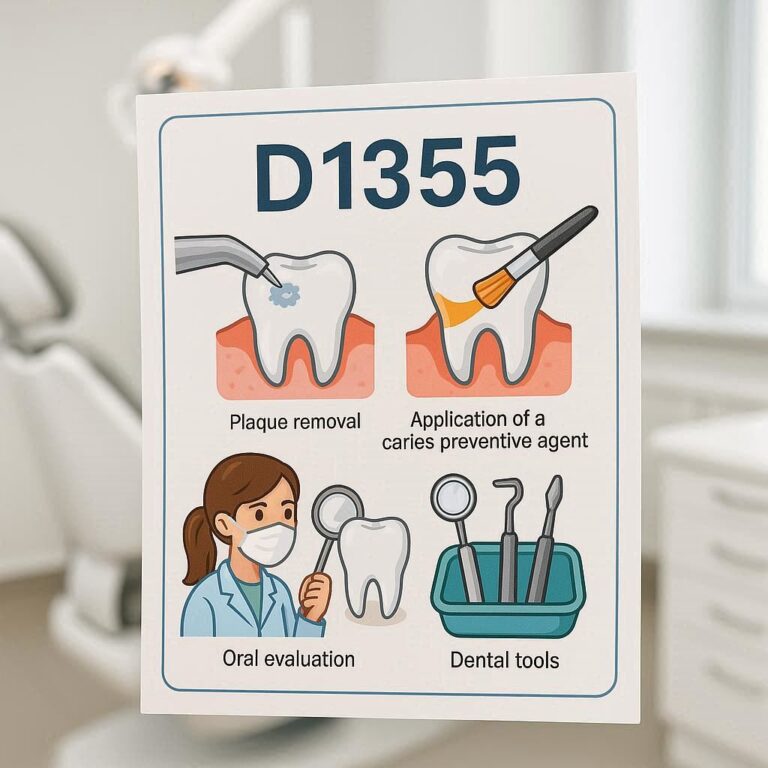D6721 Dental Code: Crown – Porcelain Fused to Noble Metal
Dental procedures are categorized by standardized codes to ensure clarity in billing, insurance claims, and treatment documentation. One such code, D6721, refers to a crown restoration where porcelain is fused to a noble metal alloy. This type of crown is widely used in restorative dentistry due to its durability, aesthetic appeal, and biocompatibility.
Unlike full-metal or all-porcelain crowns, porcelain-fused-to-metal (PFM) crowns under D6721 offer a balance between strength and natural appearance. Noble metals (such as gold, platinum, or palladium) provide a stable foundation, while the porcelain overlay mimics the look of natural teeth.
This guide will explore the D6721 dental code in depth, covering its clinical applications, advantages, cost factors, and how it compares to other crown types.

2. Understanding Dental Crowns and Their Importance
A dental crown is a tooth-shaped cap placed over a damaged or decayed tooth to restore its function, shape, and appearance. Crowns are essential for:
-
Protecting weak teeth from further damage
-
Restoring broken or severely worn teeth
-
Covering dental implants or large fillings
-
Improving cosmetic appearance
Crowns can be made from various materials, including:
-
Metal (gold, base metal alloys) – Highly durable but less aesthetic
-
All-porcelain (ceramic) – Most natural-looking but less strong than metal
-
Porcelain-fused-to-metal (PFM) – Combines strength and aesthetics
The D6721 code specifically applies to crowns where porcelain is bonded to a noble metal (high-quality, corrosion-resistant metals like gold or palladium).
3. What Does the D6721 Code Cover?
The D6721 code is defined by the American Dental Association (ADA) as:
“Crown – porcelain fused to noble metal”
This means:
-
The crown has a noble metal substructure (at least 25% noble metal content).
-
The outer layer is porcelain, customized to match the patient’s tooth color.
Key Features of D6721 Crowns
| Feature | Description |
|---|---|
| Material Composition | Noble metal base (gold, palladium, platinum) + porcelain overlay |
| Strength | High durability due to metal support |
| Aesthetics | Natural-looking porcelain finish |
| Biocompatibility | Noble metals reduce allergic reactions |
| Longevity | Lasts 10-15+ years with proper care |
4. Porcelain-Fused-to-Noble-Metal Crowns: Composition and Benefits
Why Noble Metals?
Noble metals are preferred because they:
-
Resist corrosion and tarnishing
-
Are biocompatible (unlikely to cause allergies)
-
Provide excellent marginal fit, reducing bacterial leakage
Advantages of D6721 Crowns
✅ Durability – Stronger than all-porcelain crowns.
✅ Aesthetics – Porcelain mimics natural tooth enamel.
✅ Precision Fit – Noble metals allow for better marginal integrity.
✅ Versatility – Suitable for both front and back teeth.
Disadvantages
❌ Higher Cost – Noble metals are more expensive than base metals.
❌ Potential for Porcelain Chipping – Though rare, the porcelain layer can fracture.
❌ Metal Margin Visibility – In some cases, a thin metal line may be visible near the gumline.
5. Comparison: D6721 vs. Other Crown Codes
| Code | Crown Type | Material | Best For |
|---|---|---|---|
| D6721 | Porcelain-fused-to-noble-metal | Noble metal + porcelain | Strong, aesthetic, long-lasting restorations |
| D2740 | All-porcelain/certamic | Zirconia, lithium disilicate | Highly aesthetic front teeth |
| D2750 | Porcelain-fused-to-base-metal | Non-noble metal + porcelain | Lower-cost PFM option |
| D2790 | Full cast noble metal | Gold, platinum | Molars requiring extreme durability |
6. Clinical Indications for D6721 Crowns
Dentists recommend D6721 crowns for:
-
Posterior teeth needing strength (molars/premolars)
-
Patients with metal allergies (noble metals are hypoallergenic)
-
Cases requiring a balance of aesthetics and durability
7. Step-by-Step Procedure for Placing a D6721 Crown
-
Tooth Preparation – The tooth is reshaped to accommodate the crown.
-
Impressions – A mold is taken for crown fabrication.
-
Temporary Crown Placement – A provisional crown protects the tooth.
-
Lab Fabrication – The permanent crown is custom-made.
-
Final Fitting – The crown is cemented or bonded into place.
(Include a diagram of the crown placement process.)
8. Cost and Insurance Coverage for D6721
-
Average Cost: $1,000 – $1,500 per crown
-
Insurance Coverage: Many plans cover 50-80% of the cost.
-
Factors Affecting Price: Lab fees, dentist’s expertise, geographic location.
9. Common Patient Questions and Concerns
-
“Will the crown look natural?” – Yes, the porcelain is color-matched.
-
“How long will it last?” – 10-15 years with good oral hygiene.
-
“Is the procedure painful?” – Local anesthesia ensures comfort.
10. FAQs About D6721 Dental Code
Q: Can D6721 crowns be used for front teeth?
A: Yes, but all-porcelain crowns (D2740) are often preferred for better aesthetics.
Q: Are noble metal crowns safe for MRI scans?
A: Most noble metals are non-ferromagnetic, but inform your radiologist.
Q: How do I care for my D6721 crown?
A: Brush, floss, and avoid chewing hard objects.
11. Conclusion
The D6721 dental code represents a high-quality, long-lasting crown option combining noble metal strength with porcelain aesthetics. Ideal for patients needing durable yet natural-looking restorations, these crowns offer an excellent balance of function and beauty. Consulting with a dentist will help determine if a D6721 crown is the best choice for your dental needs.


